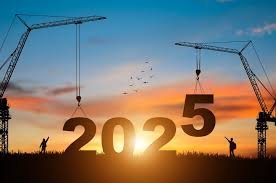As economic, environmental, and technological transformations accelerate, the construction and building materials sector is gearing up for a new phase filled with opportunities and challenges. Which markets will shine in 2025? Here’s a closer look at the key opportunities shaping the future of this industry.
Environmental Transition: A Driver of Innovation
By 2025, the shift toward sustainable energy will no longer be optional but a necessity. More companies are turning to sustainable construction solutions and eco-friendly materials such as low-carbon concrete, natural insulation, and integrated solar panels.
Increasingly strict regulations, especially in Europe, are pushing industry players to rethink their projects to reduce carbon footprints. This creates a golden opportunity for innovative companies offering solutions that align with these requirements.
Energy Renovation: An Untapped Goldmine
One of the most promising pillars for 2025 is energy renovation of buildings. With substantial financial incentives and government support, the demand for improving energy efficiency in older structures is booming. High-performance windows, smart heating systems, and integrated home automation solutions will dominate the market.
“The growth potential in this sector is immense, as over 70% of buildings in Europe need renovation to meet carbon neutrality targets by 2050,” notes an industry expert.
Modular and Prefabricated Construction: Fast and Efficient Solutions
Modular and prefabricated construction is becoming the preferred choice for many developers. These methods ensure reduced costs and timelines without compromising quality. In 2025, these solutions will remain ideal for urban housing projects and temporary structures.
Smart Infrastructure: The Digital Future of Cities
The rise of smart cities is driving massive investments in connected and advanced infrastructure. By 2025, urban projects will incorporate advanced building materials embedded with sensors, smart resource management solutions, and modernized underground networks to enhance city efficiency.
Recycling and Circular Economy: The Strategy for Tomorrow
Reducing waste and maximizing the use of recycled materials are central to achieving both environmental and economic efficiency. This includes reusing construction waste to produce new materials such as recycled aggregates and implementing sustainable building deconstruction solutions.
“Recycling construction waste can cut material supply costs by up to 40%,” according to a recent report.
Wood and Biosourced Materials: A Sustainable Choice
Wood and biosourced materials, such as hemp and straw, are gaining traction as attractive alternatives to traditional materials. With their lightweight, sustainability, and low environmental impact, these materials are an excellent choice for architects and contractors.
Digitalization: The Engine of Transformation
The construction sector continues to digitalize, driven by the increasing adoption of technologies like Building Information Modeling (BIM) and digital twins. These tools enhance project management, reduce errors, and increase design efficiency.
A Future Full of Opportunities
The year 2025 promises immense opportunities for the construction and building materials sector. Companies that can adapt to new demands and invest in sustainable innovations and smart technologies will gain a significant competitive edge.
The critical question is: Are you ready to tackle the challenges of the futur?








